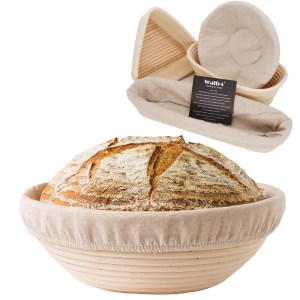Why do we get satiated for a long time after eating certain foods, while after consuming others we soon return to the refrigerator? It turns out that the products have different satiety indices. If you know this, you can be more aware of your diet.
What Is The Satiety Index?
This index is the measure of the ability of a food to reduce hunger, increase the feeling of being full and therefore reduce the energy intake you will have in the hours after that meal.
Therefore, if making your change of habits towards the search for a different body composition you are going hungry, it is probably (among other things) because in the nutritional planning you are not taking into account this factor.
If you frequently consume foods with a low satiety index, you will tend to be hungrier and eat more throughout the day, since they are mainly very calorie-dense products and less satiating due to their nutritional composition.
They tend to be above all, poor in fiber, high in refined flours and sugars and in poor quality fats. If you opt for foods with a high satiety index, you will eat less and find it easier to lose weight and reach your desired body composition, since these are foods rich in fiber, protein and fat of good quality.
Foods with a high satiety index are distinguished by:
- High levels of appetite suppressants (potatoes)
- High in protein, which takes longer to digest than other energy sources (meat)
- A low glycemic index, which means carbohydrates take longer to digest (oatmeal)
- High in fiber, which takes longer to digest than low-fiber foods (fruits)
- Low calorie content (vegetables)
The Satiety Index: The Satiating Power Of Foods
The satiating power of foods is a fundamental variable to control the stimulus of hunger. It is influenced by several factors, of a sensory, mechanical and hormonal nature:
- the view of the food
- chewing
- swallowing
- gastric filling and emptying
- post-absorption factors
Calorie Density
The satiety index of a food is inversely proportional to its caloric density. In fact, a greater volume with the same calories means a greater gastric filling and therefore greater satiety.
Food Consistency And Chewing
Chew for a longer time the same amount of food satiates more and longer because you give time to the anorectic signals coming from the gastrointestinal system to reach the brain stimulating the feeling of satiety.
For the same reason, foods that require long chewing are preferred, such as meat, pasta, bread, and vegetables.
Fiber
Foods rich in fiber, in addition to having a lower caloric density, slow down gastric emptying and the release of glucose into the blood, prolonging the sense of satiety by mechanical action (food remains longer in the stomach) and hormonal (modulated insulin response).
Fats And Sugars
Foods rich in fats and sugars (e.g. sweets, snacks, ice cream, butter, oil, dried fruit) have a high caloric density and most of these take little time to chew. The result is the introduction of many calories without satisfying hunger, which will lead to the search for more food and therefore calories in excess of the real need.
How Do You Cook Potatoes?
The method you use to cook potatoes greatly influences the calories that they will later give you when you eat them. Observe the great difference in calories that occurs by cooking 100 grams of potatoes depending on the type of cooking used:
- Cooked or roasted with skin (without adding fat) - 80 kcal
- Frozen pre-fried (with a slight pre-frying) - 275 kcal
- Fried at home - 380 kcal
- Commercial fried (bag chips) - 490 kcal
The Satiating Power Of The Potato
Not all potatoes satiate the same. The difference is not only in the energy they bring you, but the way they cook them changes their satiating power: it is not the same that they are cooked potatoes than fried. The reason: their glycemic index varies and their carbohydrates behave either as fast-absorbing or as “slow” hydrates. If you take them…
- Steamed (without being in contact with water) or roasted - Its glycemic index is medium-low. They add few calories and are digested slowly (they gain little weight). In addition, they provide you with more nutrients, especially potassium and vitamins B6, C, and folic acid.
- Boiled (immersed in water with skin) - Its glycemic index is medium. They lose nutrients, which are dissolved in the cooking water.
- Fried and chopped or crushed into a puree - Its glycemic index is high. Crushed, their starch breaks down and they become rapidly absorbed. Thus, they lose almost all their vitamin C content (even more so if you use sunflower oil






